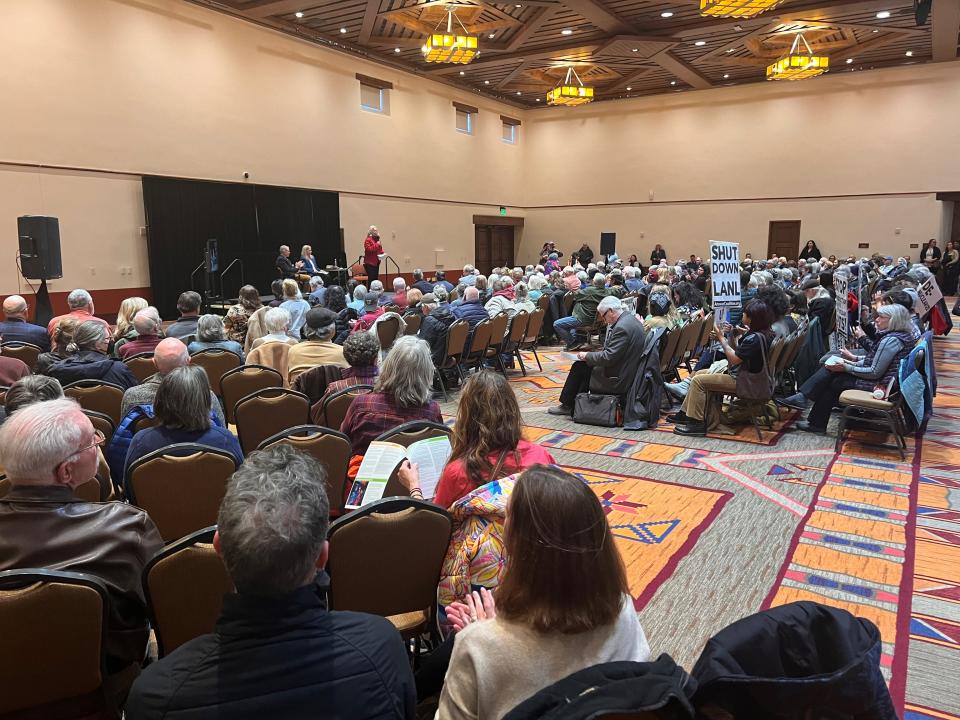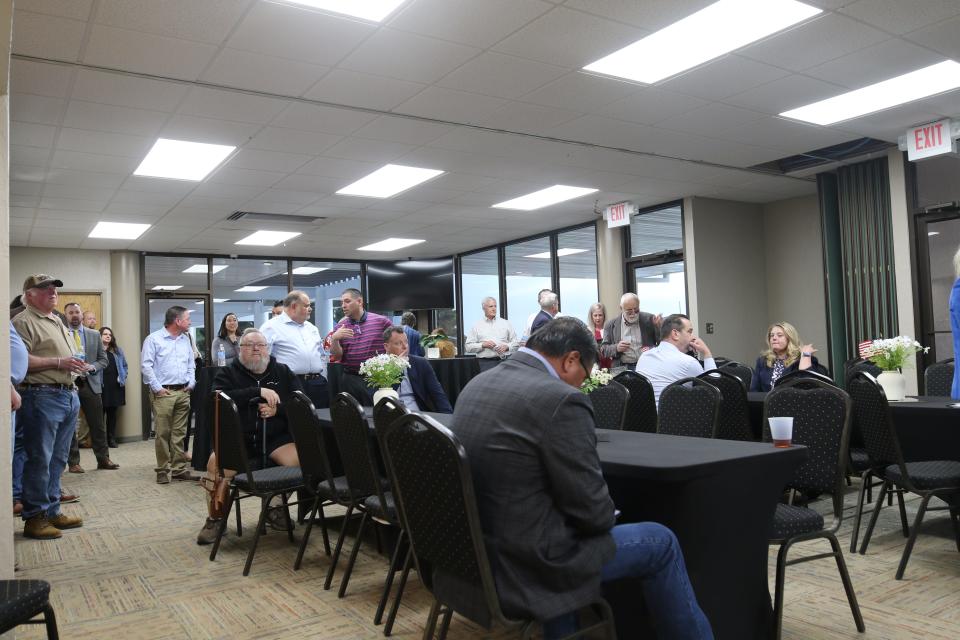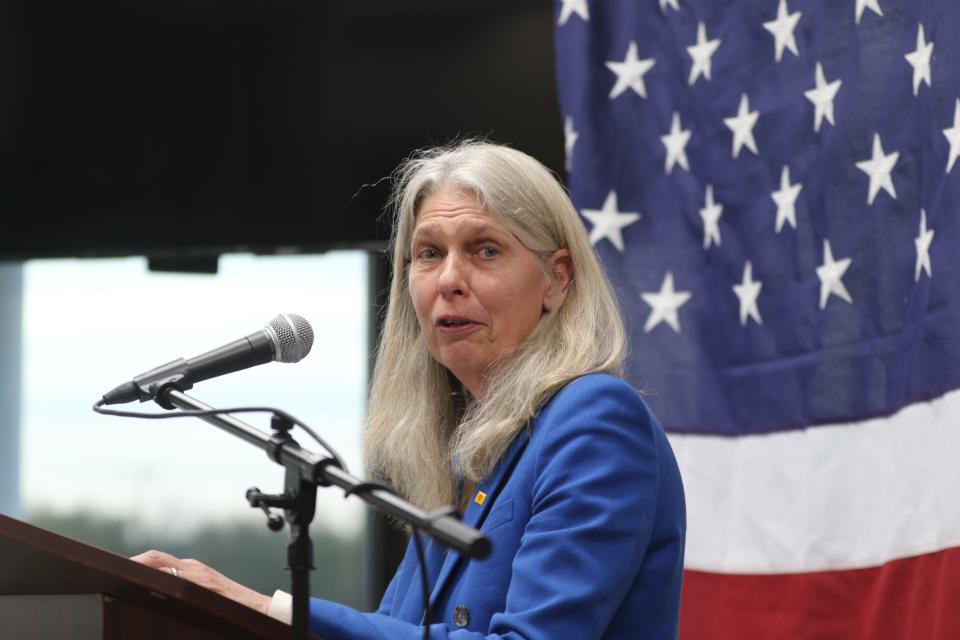More warheads, more nuclear waste to New Mexico. Santa Fe fearful, as Carlsbad leaders support efforts
Two meetings on nuclear waste were held in New Mexico this week, on different sides of the state with very different reactions from attendees.
On Tuesday, a townhall-style meeting was held in Santa Fe which more than 300 persons attended and about 200 participated online.
Most expressed fears and concerns that a federal plan to transport surplus plutonium to the Waste Isolation Pilot Plant near Carlsbad would endanger local communities along the transportation routes.
More: More nuclear waste coming to Carlsbad-area repository as new contractor takes over
The next night at a meeting at the city golf course in Carlsbad, about 30 business leaders, elected officials and invited guests took a much warmer tone with the federal government and its plans for New Mexico and the nearby WIPP site.
Under the federally proposed plan, surplus plutonium would move via truck from the Pantex Plant near Amarillo, Texas to Los Alamos National Laboratory (LANL) in northern New Mexico for processing, then to the Savannah River Site in South Carolina for additional preparation before finally heading to WIPP for disposal.
By then, the 34 metric tons of plutonium set for disposal would meet characterization standards for transuranic (TRU) nuclear waste, meaning the program would not result in any waste of a higher radioactivity than that which the repository was intended to store.
More: Will a nuclear waste project move forward despite New Mexico's bill aiming to block it?
But the program would see waste traveling through New Mexico, and especially the northern portion of the state, multiple times.
That’s a problem for Santa Fe County Commissioner Anna Hansen, who moderated the Tuesday meeting at the Santa Fe Convention Center with the Department of Energy’s National Nuclear Security Administration (NNSA) – the agency devising the plan – and argued it could burden her community with the risk of exposure.
At the same time, the NNSA also was planning to ramp up the production of plutonium pits, the triggers for nuclear warheads, at Los Alamos and Savannah River site, hoping to produce up to 80 pits a year by 2030.
More: Air shaft at nuclear waste site near Carlsbad halfway drilled, operational by 2026
Some of the waste from that program would also be destined for WIPP as it’s the only deep geological repository in the U.S. for nuclear waste.

“People feel betrayed,” Hansen said in an interview with the Carlsbad Current-Argus, arguing the two NNSA programs marked an “expansion” of WIPP’s operations beyond what New Mexico originally agreed to when the facility was developed.
She said “legacy waste” from past programs still waiting for disposal at Los Alamos was being disregarded in favor of the new streams the NNSA intended to generate.
More: Bill in-hand, Lujan Grisham renews fight against nuclear waste site in southeast New Mexico
“They still feel frustrated that the legacy waste at LANL has not been cleaned up and new waste is being generated and also going to WIPP,” Hansen said of attendees at the Santa Fe meeting. “It’s heart-wrenching when you hear the young people concerned with manufacturing bombs.”
Jack Volpato, chair of the Carlsbad Mayor’s Nuclear Task Force, commended the NNSA and the WIPP project at the Wednesday meeting in Carlsbad for supporting the local community, its workforce and economy in the decades since the site was opened.

“The men and women in this room and many others represent what is best for our community,” Volpato said to the group. “We know that NNSA is looking at using WIPP for disposal of surplus plutonium.”
More: Nuclear waste transportation fears lingering amid storage project in southeast New Mexico
He touted a “flawless” record of transporting waste for the WIPP project, hoping to allay concerns that increased transportation would bring increased risk.
“We know there will be those who live in other parts of the state that oppose this project due to concerns with transportation,” Volpato said during his prepared remarks. “I would like to point out that WIPP has a flawless transportation record. WIPP is an asset to this state and nation.”
NNSA Administrator Jill Hruby spoke at both meetings, and at the Carlsbad event said in an interview with the Current-Argus that WIPP’s broader mission was “environmental responsibility,” and that the facility would be instrumental in the U.S.’ nuclear nonproliferation goals by making the excess plutonium unusable for weaponization.
More: Bill to block nuclear waste in southeast New Mexico heads to House Floor for final vote
She also said plutonium pit production was essential to modernizing the U.S. nuclear arsenal as other, potentially adversarial nations like China and Russia did the same, and that WIPP would support that national security mission.

“I agree that we are using WIPP to support pit production,” Hruby said. “The primary purpose of WIPP is to be environmentally responsible. It seems to me this fits that mission.”
She said due to increased NNSA operations at Savannah River Site, NNSA recently took ownership of that facility from the Department of Energy’s Office of Environmental Management – the DOE arm that runs the WIPP site – but was unsure of if the NNSA would also take over WIPP as the nation produces more waste.
More: Safety, longevity of nuclear waste disposal near Carlsbad debated amid permit renewal
“In the case of WIPP, there’s still a lot of legacy waste that needs to be moved to WIPP,” Hruby said during her speech. “We need to meet the moment and you are essential to that right here in southeast New Mexico. We are very committed to the facility here.”
But Hansen, the Santa Fe County commissioner, said the NNSA’s plans were extraneous to WIPP’s original mission and what should be its primary purpose: to get nuclear waste “off the hill” in Los Alamos.
That’s the only true benefit to the people of New Mexico who host the WIPP site, she said.
“It’s a complete expansion of WIPP’s mission to be putting new and generated waste,” Hansen said. “It’s insanity to move surplus plutonium around the country. We don’t want to continue being left behind. Waste from all over the country has been coming here.”
Adrian Hedden can be reached at 575-628-5516, achedden@currentargus.com or @AdrianHedden on Twitter.
This article originally appeared on Carlsbad Current-Argus: Nuclear waste in New Mexico feared in Santa Fe, supported in Carlsbad

